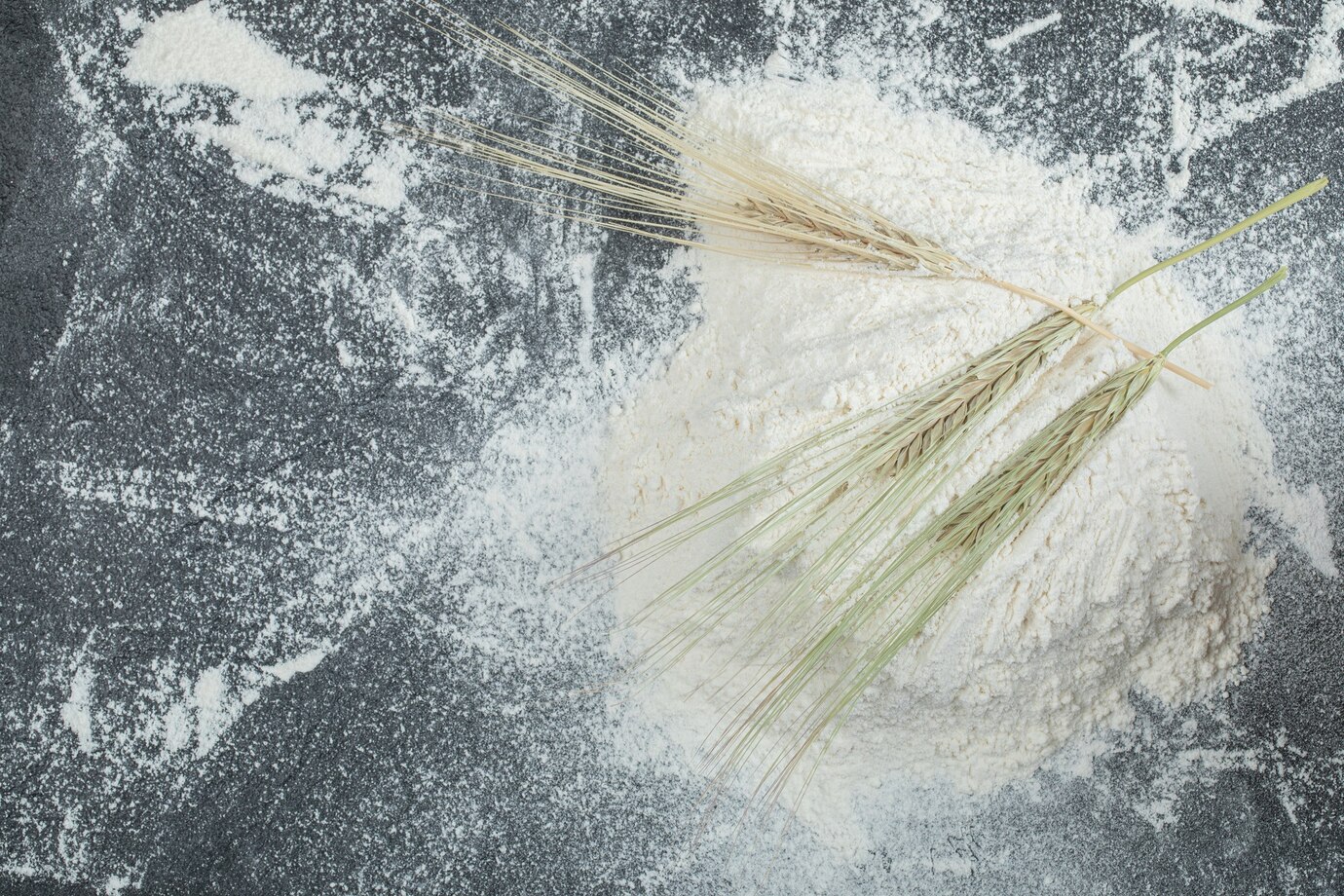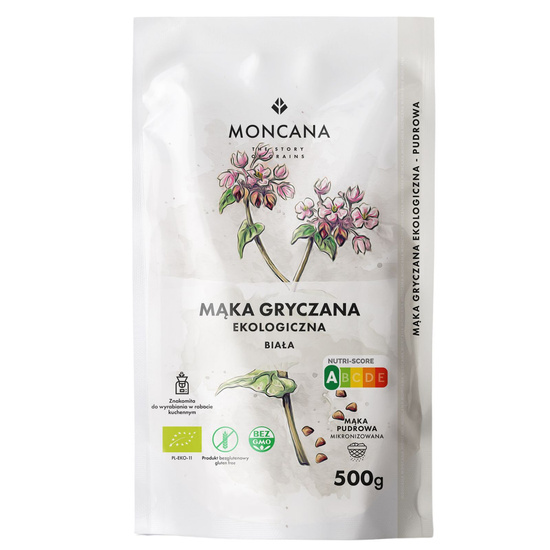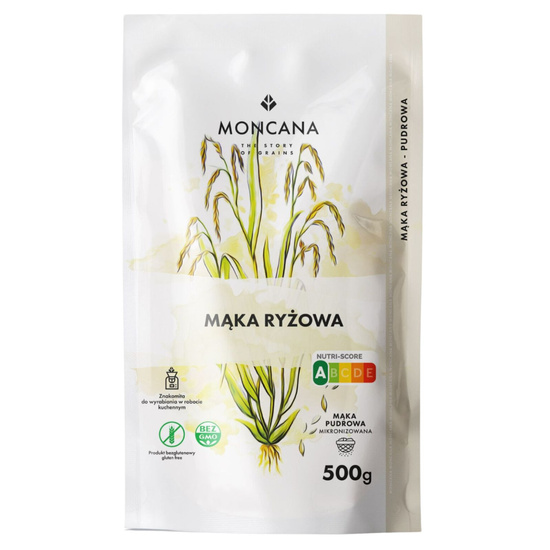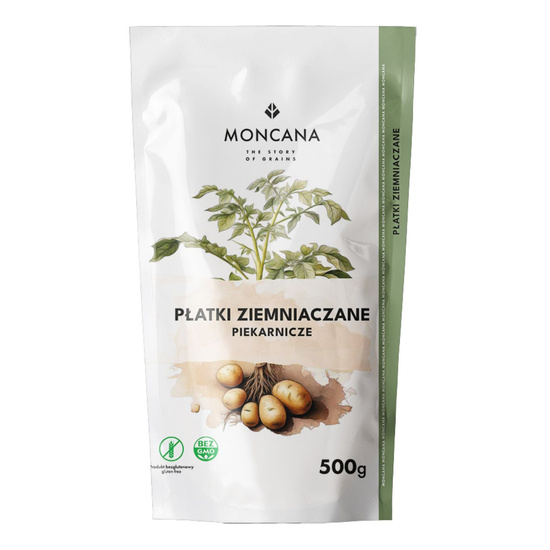What to replace wheat flour with in a gluten-free diet?

Substitutes for wheat flour on a gluten-free diet
One of the most important challenges facing people on a gluten-free diet is finding suitable substitutes for wheat flour. Fortunately, there are many alternatives that allow you to enjoy your favorite baked goods without worrying about gluten. But beware! In addition to just replacing the flour, it is also important to use something that binds and will be a substitute for gluten. It's essential for most gluten-free baked goods because it provides the elasticity and texture that are lost when gluten is removed. Without them, baked goods (especially breads and cakes) can become dry and crumbly.
- Gluten-free rice flour is one of the most widely used substitutes for wheat flour. It is light and has a delicate flavor, making it versatile and easily adaptable in a variety of recipes. It can be used in a 1:1 ratio in many baked goods, making it an ideal choice for those wondering, what to replace wheat flour with on a gluten-free diet. Suitable for preparing cakes, cookies, pancakes and thickening sauces. In addition, rice flour is rich in B vitamins and minerals, which further enriches the nutritional value of dishes.
- Gluten-free oat flour, made from gluten-free oats, features a slightly nutty flavor and soft texture. It is an excellent substitute for wheat flour in baked goods such as bread, cakes and muffins. Thanks to its texture, oat flour adds moisture and softness to baked goods, which is especially important in a gluten-free diet. Oat flour is also rich in fiber, which aids digestion and keeps you feeling satiated for longer.
- Gluten-free buckwheat flour, obtained from white buckwheat, is an excellent source of antioxidants and B vitamins. It has a distinctive, slightly nutty flavor that can enrich baked goods with a unique aroma. When looking for substitutes for wheat flour, it is worth noting buckwheat flour, which is versatile in cooking, including for making pancakes, dumplings, pasta and bread. Due to its high protein and fiber content, buckwheat flour is not only tasty, but also very healthy.
- Gluten-free corn flour is characterized by its intense yellow color and slightly sweet taste. It is often used in recipes for cakes, cookies and other baked goods. Thanks to its texture, it adds crunchiness and lightness to baked goods. Corn flour also works well as a coating ingredient for fried foods. When combined with other gluten-free flours, it can help you get the desired results in baking.
- Gluten-free millet flour, made from millet groats, is rich in B vitamins, lecithin and protein. It is an excellent substitute for wheat flour in a gluten-free diet, which can be used for baking cakes, pancakes, bread and preparing dumplings. The flour has a delicate taste and is easily digested, making it suitable for people with sensitive digestive systems. In addition, millet groats have alkalizing properties, which helps maintain the body's acid-base balance.
Substitutes for wheat flour on a gluten-free diet are not only healthy, but also versatile. Rice, oat, buckwheat, corn and millet flours offer a variety of flavors and textures that can enhance any recipe. Given their unique properties, you can enjoy your favorite baked goods, while taking care of your health. NOTE! Replacing the flour alone is not enough, you should also add something to the baked goods to replace the gluten, for example. ground egg plant husk, chia seeds or flaxseeds - they are responsible for the stickiness and binding of the dough.
What to replace wheat flour on a gluten-free diet: practical tips
Switching to a gluten-free diet involves finding suitable substitutes for wheat flour. Fortunately, there are many options that not only allow you to bake and cook gluten-free, but also enrich your diet with additional nutritional value.
Combining different gluten-free flours for better texture
One of the most important aspects of gluten-free baking is to skillfully combine different flours. Using a blend of several gluten-free flours allows for better texture and consistency in baked goods. For example, gluten-free rice flour can be too loose, but when combined with potato flour or gluten-free corn flour, baked goods become more consistent and elastic. Proper substitutes for wheat flour often require experimenting with different combinations.
Here are some popular combinations:
- Rice flour + potato starch + corn flour
- Gluten-free millet flour + buckwheat flour
- Almond flour + coconut flour + oat flour
Each of these flours brings its own unique properties that affect the taste and texture of the final product.
Adjusting recipes: proportions, baking time and temperature
Changing wheat flour to gluten-free requires adjusting regulations. It is worth remembering that gluten-free flours have different fluid absorption properties and may require modification of the amount of water or milk used. When looking for an answer to the question of what to replace wheat flour with on a gluten-free diet, consider these differences.
The general proportions of wheat flour substitutes are:
- 1 cup whole wheat flour = 1 cup almond flour
- 1 cup whole wheat flour = 1/4 to 1/3 cup coconut flour (+ extra liquids)
Baking time can be reduced, but the baking temperature should usually be slightly higher to get the right texture of the baked goods.
For example, gluten-free millet flour, rich in B vitamins and protein, works well in baking cakes, pancakes, and breads, but may require longer baking time at a lower temperature compared to wheat flour.
A selection of certified gluten-free flours with the crossed ear symbol
When choosing wheat flour substitutes, it is important that they are certified and have the crossed ear symbol. This ensures that the product contains no traces of gluten, which is crucial for people with celiac disease or gluten intolerance. Certified gluten-free flours are available in our offer.
Paying attention to certificates and symbols on product packaging helps avoid unpleasant surprises and ensures safe food preparation.
In conclusion, replacing wheat flour in a gluten-free diet requires some changes and adjustments, but with the variety of gluten-free flours available, such as millet flour, buckwheat flour and corn flour, you can enjoy tasty and healthy baked goods. By remembering the right proportions, baking time and temperature, and choosing certified products, we can safely and effectively transition to a gluten-free diet.
Gluten doesn't have to limit your cooking! In our article, we discussed different types of gluten-free flours and how they can be used as replacements for wheat flour. A gluten-free diet is not only a necessity, but also a great opportunity to discover new flavors and experiment with culinary possibilities. Try today what to replace wheat flour on a gluten-free diet in your recipes and see how rich and varied gluten-free cuisine can be. Check out the offer on moncana.pl and start your culinary adventure!


